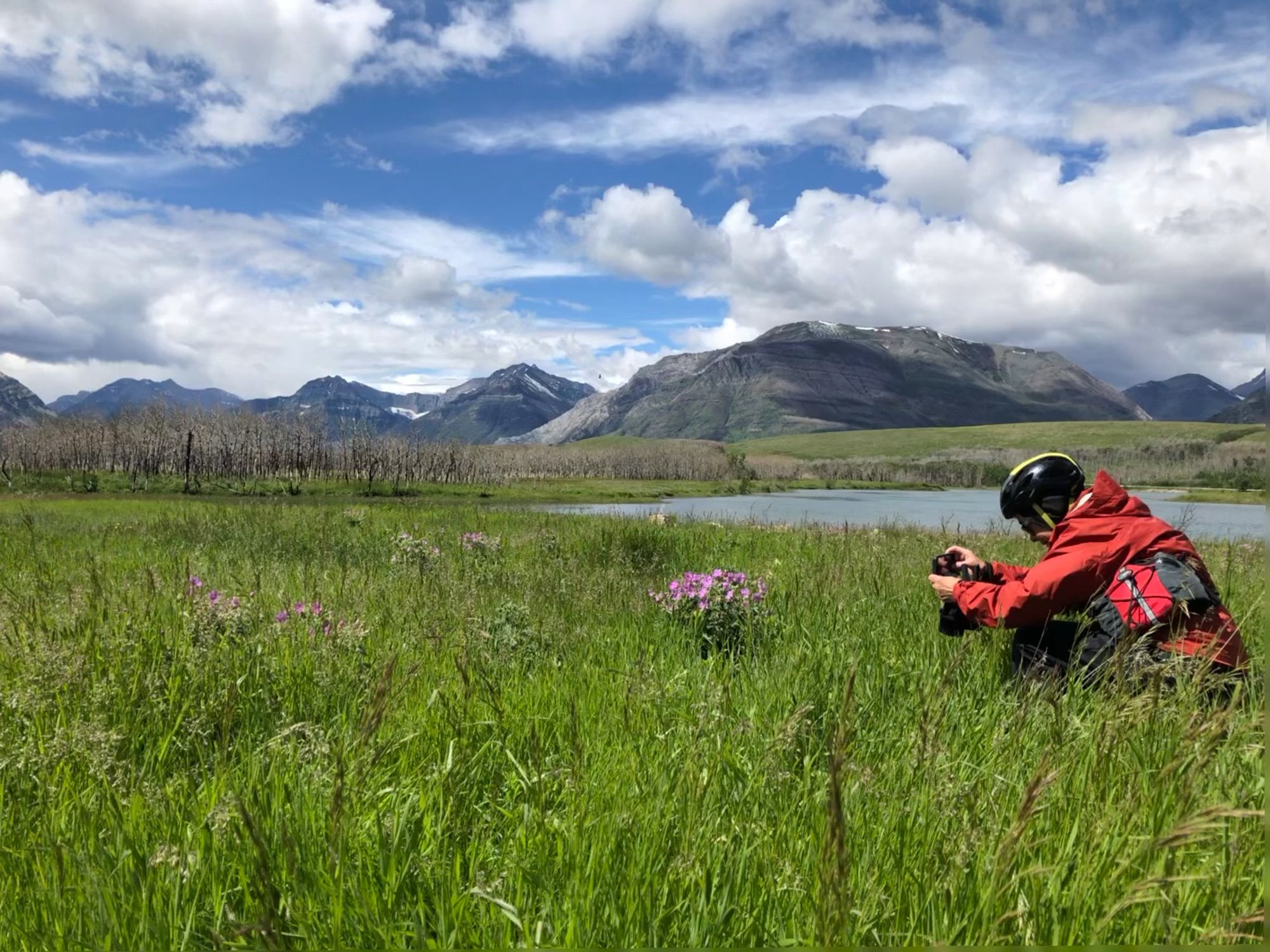5 Beginner-Friendly Photography Phone Tips
Do you know that you can implement a photographer’s mindset even if you don’t have a camera? You are a photographer if you usually take pictures using only your phone or a similar device.
I compiled five beginner-friendly phone photo tips for you. By implementing a photographer’s mindset, you can elevate your results and possibly solve frustrations you have experienced.
After reading these five beginner-friendly phone photography tips, you’re well on your way to capturing better shots. However, composition plays a huge role in making your images stand out from the crowd. Please click easy photography composition tips for more helpful beginner photography tips for your camera or phone photos.
1. Hold Your Phone Steady With Two Hands.
Do you agree that it’s easy to aim a phone here, there, and everywhere, with almost reckless abandonment, as you happily click away and capture special moments? Because phones are so lightweight and convenient it’s easy to overlook beginner photography basics that are as applicable to taking photos with a phone as they are to using a camera.
Camera shake is a common cause of blurry photos, and it can happen just as easily with a smartphone as with a camera, especially when using one hand to steady it. For more successful results with sharp photos or video, holding the phone close to your body, using both hands, or placing your phone on a tripod or stable surface whenever possible will help you capture your best shot.
Being mindful of holding and keeping your phone steady is essential in low-light conditions, where even the slightest movement can result in a blurry and disappointing result.
An example of holding a phone steady with both hands when taking pictures.
2. Take Advantage of Cloudy Days for Softer Lighting.
Over the years, cloudy days have become my preferred lighting, especially when I want consistent lighting on my subject(s). Because clouds act like diffusers by blocking the sun, they soften the light, providing consistent exposure without the extremes of shadows and highlights that can make getting a great photo challenging.
If you prefer bright, sunshine-filled days, you may be pleasantly surprised by the difference when taking pictures on a cloudy day. If the situation permits, I recommend experimenting with taking pictures on a bright sunny day and a cloud-filled day and comparing the differences. On sunshine-filled days, you can easily:
Lose details in the highlights and the shadows created by harsh light, particularly midday.
On cloudy days with diffused, or softened light:
Discover how details become apparent and more pleasing with the consistency created by cloud cover.
While bright, sunny days may initially seem ideal for photography, be mindful of harsh sunlight, which can create strong shadows and blown-out highlights. Cloud cover is particularly helpful when taking portraits or photographing nature, as colors appear richer and details are more defined. If you are taking photos on a sunny day, look for shaded areas that can provide soft, diffused light.
An example of how cloud-filled days reveal more textures, details, and evenly lit exposures in this mountains and lake landscape image.
Cloud cover diffuses the sunlight, creating consistent exposure throughout the scene of wild roses.
3. Limit or Avoid Using the Screen Zoom for Sharper Images
I know; it’s so convenient to zoom in using the pinch and expand with your fingers on your phone. However, if you move closer to your subject whenever possible, you’ll have better quality photos as the phone zoom may result in pixilated and lesser quality photos.
If you can’t get closer, or it’s unsafe, consider cropping the image afterward instead of relying on digital zoom when taking photos.
Filling the frame with your subject can also improve results, but have fun experimenting with various compositions and see what you like the best. Additionally, phone camera options such as portrait, square, panorama, and video provide variety and opportunities for creativity!
An example of moving closer to take a close-up photo of a bee instead of using the phone screen zoom feature. Additionally, the composition rule of thirds in photography is evident with the off-center placement of the primary subject, the bee.
4. Place Your subjects Off-Center or Fill the Frame.
Sometimes, you want to position your subject in the center of the frame if it lends itself well to the composition. However, it may be time to shake things up if placing your main subject smack in the middle center feels natural, easy, or something you haven’t paid much attention to before now and is all too familiar. There was a time when I could accomplish that with just about every photo I took without regard to composition.
In photography, the rule of thirds suggests placing the point of interest, or your main subject, in a one-third quadrant at the top, bottom, left, or right rather than in the middle. Imagine dividing your frame into nine equal sections using two horizontal and two vertical lines. By positioning the main subject of your photo along these lines or at the intersection points, you’ll create a more balanced and engaging composition. Most phone cameras have a grid option in the settings—turn it on to help you frame your shots effectively. The bee in the above photo is an example of using the rule of thirds placement, in addition to the examples below.
Composition is just one of the five friendly photography phone tips, and you’ll add interest and elevate your photography skills as you give your subject “room to move” in the scene. For more information and examples of composition that you can achieve with your phone, please click on easy composition tips for beginners.
Implementing the rule of thirds in photography with a subject placed in the lower right quadrant of the grid in a landscape scene.
Here I am after having my photo taken with the expansive landscape in the background. Had the pathway extended on the right side of this frame, I would have moved to it for a different composition and unobstructed view of the landscape behind me. The photo above is a good example of this type of composition.
However, if you have seen or perhaps taken landscape photos in which people appear more like dots on the horizon, this is a good example of how you can place people close enough to be recognizable and include the vastness in your frame.
5. Turn your phone sideways for Improved Composition
It’s easy and convenient to take photos with a phone in the standard default vertical (portrait) orientation position. My fifth photography-friendly phone tip is about changing the orientation of your phone from portrait to landscape (vertical to horizontal).
Many people naturally hold their phones vertically when taking pictures, but turning your phone sideways (landscape mode) can often result in a more visually appealing composition. This technique works particularly well for landscapes, group shots, and nature photography, allowing you to capture more of the scene and create a balanced, appealing image.
Vertical shots, however, are useful for portraits or social media stories. Remember to experiment with different orientations, and you’ll soon discover the difference that turning your phone sideways makes in your final results!
An example is turning a phone sideways to improve composition in a winter landscape.
Holding the phone in the side ways, or landscape, orientation captures the expanse and grandeur of the scenery and implements the rule of thirds in photography as the foreground fills the lower two-thirds of the frame.
Often, it's easy to be overwhelmed when it comes to photography, and I understand that.
Holding the phone in the portrait orientation changes the results compared to turning the phone sideways for improved composition.
In the two examples above, you can see how turning your phone sideways widens the expanse captured from side to side, while the second example includes more sky and foreground in comparison. If you find yourself in situations where you’re unsure about the better way to hold your phone, take pictures in both orientations. You can always make a decision afterward, or you may discover that you like them equally for different reasons.
Additional and reminder beginner-friendly photography phone tips:
Get to know your phone camera and what it’s capable of.
Take your time to compose your scene and improve your results.
Begin observing lighting and experiment by taking pictures during different times of day and conditions, such as sunny and cloudy.
Take photos with your phone in portrait (vertical) and horizontal (landscape) positions for variety and improved composition rather than defaulting to your preference.
Experiment with varying perspectives, such as from down low or higher up and angling downward.
Be ready for candid captures and capture the spontaneity.
Take advantage of the grid lines (found in your phone camera settings) to practice placing subjects off-center for more compelling compositions.
Remember to check and clean your phone camera lens if necessary.
In conclusion: If your takeaway from this post is to implement and practice even just one of the 5 beginner-friendly phone photography tips, in the beginning, you’ll be well on your way to immediately improving your phone photos!
If you need a quick and handy reference, please click here: 10 Photography Terms Demystified for your free copy of this helpful guide.











